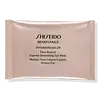What's inside
What's inside
 Key Ingredients
Key Ingredients

 Benefits
Benefits

 Concerns
Concerns

 Ingredients Side-by-side
Ingredients Side-by-side

Water
Skin ConditioningButylene Glycol
HumectantPentaerythrityl Tetraethylhexanoate
EmollientDiphenylsiloxy Phenyl Trimethicone
Skin ConditioningGlycerin
HumectantDipropylene Glycol
HumectantPEG-60 Hydrogenated Castor Oil
EmulsifyingTocopheryl Acetate
AntioxidantPhenoxyethanol
PreservativeAlcohol
AntimicrobialCarbomer
Emulsion StabilisingSodium Citrate
BufferingParfum
MaskingBHT
AntioxidantSqualane
EmollientXanthan Gum
EmulsifyingPotassium Hydroxide
BufferingRetinol
Skin ConditioningPolysorbate 20
EmulsifyingCitric Acid
BufferingTrisodium EDTA
Magnesium Ascorbyl Phosphate
AntioxidantButylphenyl Methylpropional
PerfumingSapindus Mukorossi Peel Extract
Skin ConditioningLimonene
PerfumingLinalool
PerfumingUncaria Gambir Extract
AstringentCitronellol
PerfumingAlpha-Isomethyl Ionone
PerfumingPaeonia Suffruticosa Root Extract
Skin ProtectingGeraniol
PerfumingBenzyl Benzoate
AntimicrobialSodium Acetylated Hyaluronate
HumectantHydroxyproline
Skin ConditioningChlorella Vulgaris Extract
Skin ConditioningCI 75130
Cosmetic ColorantWater, Butylene Glycol, Pentaerythrityl Tetraethylhexanoate, Diphenylsiloxy Phenyl Trimethicone, Glycerin, Dipropylene Glycol, PEG-60 Hydrogenated Castor Oil, Tocopheryl Acetate, Phenoxyethanol, Alcohol, Carbomer, Sodium Citrate, Parfum, BHT, Squalane, Xanthan Gum, Potassium Hydroxide, Retinol, Polysorbate 20, Citric Acid, Trisodium EDTA, Magnesium Ascorbyl Phosphate, Butylphenyl Methylpropional, Sapindus Mukorossi Peel Extract, Limonene, Linalool, Uncaria Gambir Extract, Citronellol, Alpha-Isomethyl Ionone, Paeonia Suffruticosa Root Extract, Geraniol, Benzyl Benzoate, Sodium Acetylated Hyaluronate, Hydroxyproline, Chlorella Vulgaris Extract, CI 75130
Water
Skin ConditioningGlycerin
HumectantDipropylene Glycol
Humectant1,2-Hexanediol
Skin ConditioningCeratonia Siliqua Gum
EmollientChondrus Crispus Extract
Skin ConditioningBetaine
HumectantChondrus Crispus Powder
AbrasiveCellulose Gum
Emulsion StabilisingHyaluronic Acid
HumectantCaffeine
Skin ConditioningNiacinamide
SmoothingPalmitoyl Tripeptide-5
Skin ConditioningAcetyl Tetrapeptide-5
HumectantAloe Barbadensis Leaf Extract
EmollientVaccinium Angustifolium Fruit Extract
Skin ProtectingCitrullus Lanatus Fruit Extract
Skin ConditioningGlycyrrhiza Glabra Root Extract
BleachingCucumis Sativus Fruit Extract
EmollientLycium Chinense Fruit Extract
AntioxidantLaminaria Japonica Extract
Skin ProtectingHelianthus Annuus Seed Oil
EmollientHizikia Fusiforme Extract
Skin ConditioningAnthemis Nobilis Flower Extract
MaskingGelidium Cartilagineum Extract
Skin ProtectingSalicornia Herbacea Extract
Skin ConditioningMica
Cosmetic ColorantSodium Polyacrylate
AbsorbentPotassium Chloride
Butylene Glycol
HumectantHydrogenated Polydecene
EmollientSucrose
HumectantPolysorbate 20
EmulsifyingEthylhexylglycerin
Skin ConditioningSynthetic Fluorphlogopite
CI 77891
Cosmetic ColorantTrideceth-6
EmulsifyingDisodium EDTA
Phenoxyethanol
PreservativeCI 77491
Cosmetic ColorantWater, Glycerin, Dipropylene Glycol, 1,2-Hexanediol, Ceratonia Siliqua Gum, Chondrus Crispus Extract, Betaine, Chondrus Crispus Powder, Cellulose Gum, Hyaluronic Acid, Caffeine, Niacinamide, Palmitoyl Tripeptide-5, Acetyl Tetrapeptide-5, Aloe Barbadensis Leaf Extract, Vaccinium Angustifolium Fruit Extract, Citrullus Lanatus Fruit Extract, Glycyrrhiza Glabra Root Extract, Cucumis Sativus Fruit Extract, Lycium Chinense Fruit Extract, Laminaria Japonica Extract, Helianthus Annuus Seed Oil, Hizikia Fusiforme Extract, Anthemis Nobilis Flower Extract, Gelidium Cartilagineum Extract, Salicornia Herbacea Extract, Mica, Sodium Polyacrylate, Potassium Chloride, Butylene Glycol, Hydrogenated Polydecene, Sucrose, Polysorbate 20, Ethylhexylglycerin, Synthetic Fluorphlogopite, CI 77891, Trideceth-6, Disodium EDTA, Phenoxyethanol, CI 77491
 Reviews
Reviews

Ingredients Explained
These ingredients are found in both products.
Ingredients higher up in an ingredient list are typically present in a larger amount.
Butylene Glycol (or BG) is used within cosmetic products for a few different reasons:
Overall, Butylene Glycol is a safe and well-rounded ingredient that works well with other ingredients.
Though this ingredient works well with most skin types, some people with sensitive skin may experience a reaction such as allergic rashes, closed comedones, or itchiness.
Learn more about Butylene GlycolDipropylene Glycol is a synthetically created humectant, stabilizer, and solvent.
This ingredient helps:
Dipropylene glycol is technically an alcohol, but it belongs to the glycol family (often considered part of the ‘good’ alcohols). This means it is hydrating and gentle on skin unlike drying solvent alcohols like denatured alcohol.
As a masking agent, Dipropylene Glycol can be used to cover the smell of other ingredients. However, it does not have a scent.
Studies show Dipropylene Glycol is considered safe to use in skincare.
Learn more about Dipropylene GlycolGlycerin is already naturally found in your skin. It helps moisturize and protect your skin.
A study from 2016 found glycerin to be more effective as a humectant than AHAs and hyaluronic acid.
As a humectant, it helps the skin stay hydrated by pulling moisture to your skin. The low molecular weight of glycerin allows it to pull moisture into the deeper layers of your skin.
Hydrated skin improves your skin barrier; Your skin barrier helps protect against irritants and bacteria.
Glycerin has also been found to have antimicrobial and antiviral properties. Due to these properties, glycerin is often used in wound and burn treatments.
In cosmetics, glycerin is usually derived from plants such as soybean or palm. However, it can also be sourced from animals, such as tallow or animal fat.
This ingredient is organic, colorless, odorless, and non-toxic.
Glycerin is the name for this ingredient in American English. British English uses Glycerol/Glycerine.
Learn more about GlycerinPhenoxyethanol is a preservative that has germicide, antimicrobial, and aromatic properties. Studies show that phenoxyethanol can prevent microbial growth. By itself, it has a scent that is similar to that of a rose.
It's often used in formulations along with Caprylyl Glycol to preserve the shelf life of products.
Polysorbate 20 is made by combining ethoxylation of sorbitan, ethylene oxide, and lauric acid. It is a mild cleansing agent, surfactant, and emulsifier.
As a surfactant, it helps collect dirt and oils for washing. Emulsifiers prevent oils and water from separating.
Polysorbate 20 also adds scent to a product. Since it is made using sorbitol, it has a sweet scent. Sorbitol can also be found in fruits such as apples and peaches.
The lauric acid used to create Polysorbate 20 is often derived from coconuts.
Polysorbate 20 may not be fungal acne safe.
Learn more about Polysorbate 20Water. It's the most common cosmetic ingredient of all. You'll usually see it at the top of ingredient lists, meaning that it makes up the largest part of the product.
So why is it so popular? Water most often acts as a solvent - this means that it helps dissolve other ingredients into the formulation.
You'll also recognize water as that liquid we all need to stay alive. If you see this, drink a glass of water. Stay hydrated!
Learn more about Water